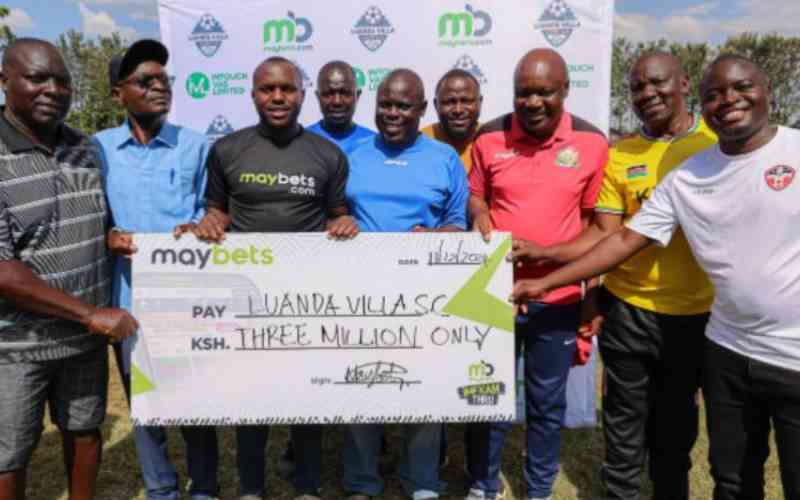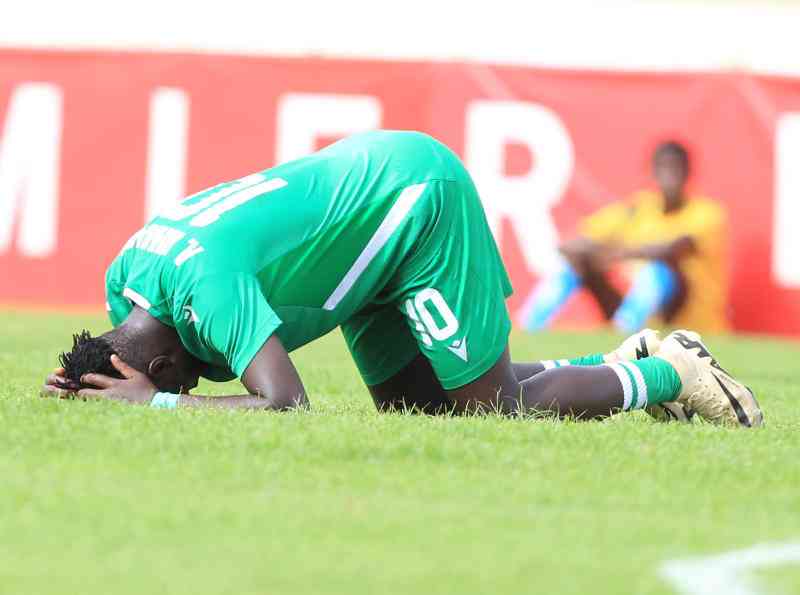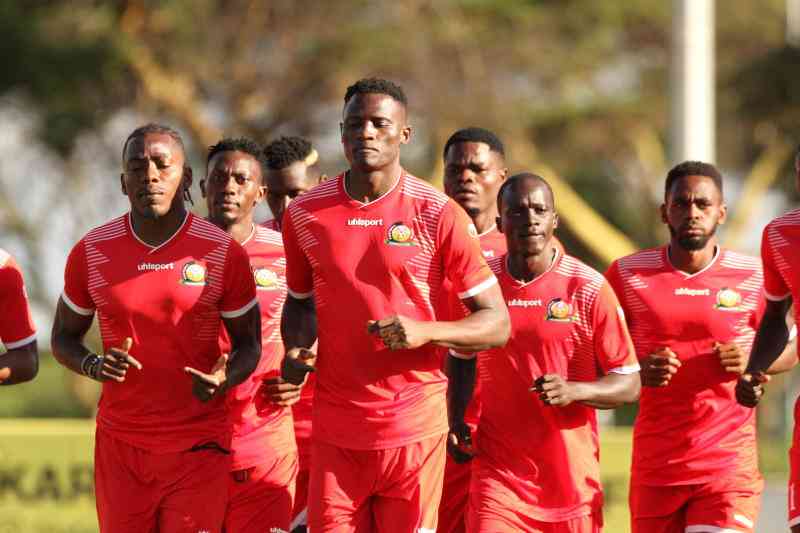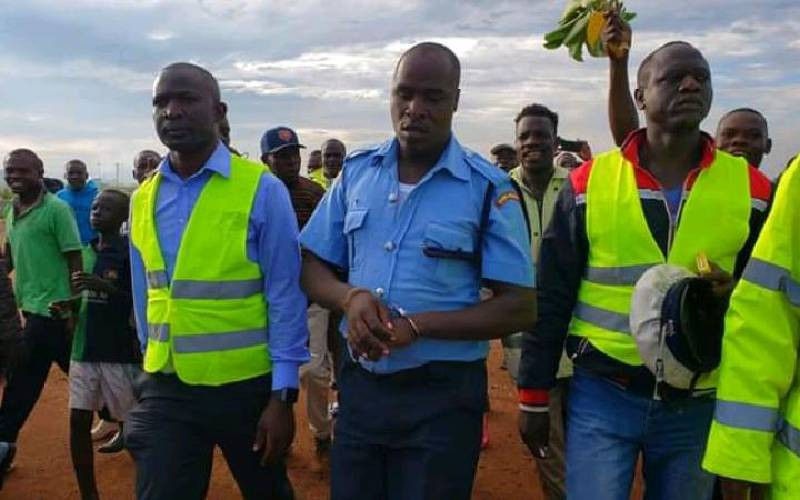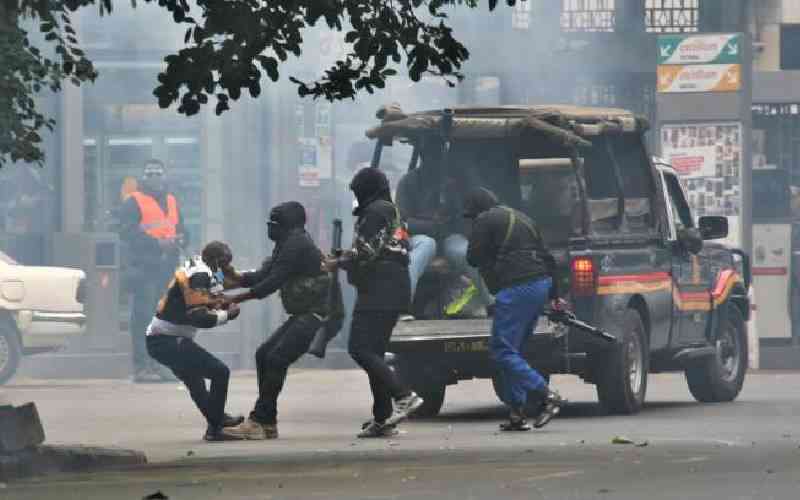Whereas the first officially recorded rugby match in Kenya was in 1909 and the first representative Kenya game in 1925, it is the history of the Ngong Road grounds of the Rugby Football Union of East Africa that is the centerpiece of Kenya’s rugby history.
It’s history began with an equally fascinating inaugural match, against the world famous British Lions, on September 28, 1955.
The founding committee members, upon whose shoulders this onerous task fell and to whom legions of rugby fans and players, owe a small debt of honour, for their visionary efforts were John Tanner, Roy Fear, J L Sinton, W Hops, M Campbell and D M Goldstein, who was the President of the Union at the time.
Londiani’s PJF Wheeler led East Africa against the British Lions, in the opening game watched by 6000 fans. Final score was 39-12 to the tourists, with Tanga’s RH Chambers kicking all of East Africa’s points.
“The tourists defeated East Africa 39-12 and gave an exhibition of running rugby which will long be remembered in East Africa,” reads a report of the match. “The speed at which they played kept the East Africa defence sorely pressed, and in the circumstances, our team came off with considerable credit.”
The British Lions — East Africa match was the first in a long line of fascinating international matches since witnessed at the grounds. Combined Oxford and Cambridge Universities toured East Africa in 1957. They played 13 matches, including two versus East Africa at the RFUEA grounds. They won both 44-9 and 47-6.
The famous British Barbarians (Baa Baas) came calling in 1958. They played against East Africa, on May 28. They won 52-12 in a match that occasioned Legco, the colonial parliament to adjourn its sitting.
East Africa side was captained by Irvine Mclean, a Nondescripts RFC player, who turns 90 next year and is still a Kenya resident.
They were followed by the Springboks on February 25, 1961. Springboks won 39-0, against East Africa, with one famous name Tom Thorpe amongst the East Africa ranks. The British Lions came calling again in 1962, winning 50-0 against East Africa on August 28. East Africa was captained by Chris Young of Nakuru.
Wales were the first post Independence European side to play at the RFUEA grounds. On May 12, 1964 they beat East Africa 26-8.
The tours then came fast and furious. Notable among them were Old Georgians Sports Club from Argentina. Old Georgian’s had three Argentina internationals (Los Pumas) in its ranks. In the Scorpions rank was one Dick Greenwood, who later became the captain and coach of the England national team.
Mean Machine’s Kenya Cup triumph in May 1977 against Impalas Boks ranks as one of the great sporting achievements witnessed at the RFUEA grounds.
John Lloyd who straddles both pre- and post independent Kenya rugby administration, must be commended. As must George Kariuki, and Dennis Awori. Both pioneer African players and long time chairs of both the RFUK and RFUEA.
Richard Omwela and Mwangi Muthee, also make this list, as do Edwin Evans and his brother Archie Evans. Tuskers and East African players, together with Mike Walsh and John Ross-Munro played an invaluable roles in the club affairs of Nondescripts. Peter Giraudo, Peter Nduati and Mike Andrew’s have been stalwarts of Impala’s administration, with Allan Mckittrick, Joe Onsando and Phillip Jalango playing the same role at Kenya Harlequins.
The Patrons Society introduced the high profile Safari Sevens, now in its 20th year.
Stay informed. Subscribe to our newsletter
From Impala, there is Lofty Reynolds, Arnie Mitchell, Danny Kimoro, Kevin Lillis, Garry Wiliiams, George Macknight, Dave Parsons, John Muhato, Chief Edebe, Gordon Bell and the trio of Andrew’s brothers, John, Ronnie and Mike. From Harlequins there is David Leckie, Doughie Hamilton, John Cashin and Peter Akatsa. Nondescripts had Gordy Millar, George Roy, Martin Amoke, Ken Chambers, Johnny Akatsa, Brian Granville-Ross, Irvine Mclean, Eddie Bristow, Dickie Evans and David Evans.
George Barbour and Ted Kabetu, who fly the flag for Mombasa RFC are some of the players who graced Ngong Road as Kenya and East Africa internationals. Jimmy Owino and Max Muniafu, Tom Oketch and Edward Rombo are arguably the best to emerge from Mwamba RFC. Emmanuel Lubembe is unforgettable from Mean Machines class of 1977.
Speaking to some old East African hands, Brian Granville-Ross and Jackson Omaido repeatedly topped their list of the finest locals to have graced the RFUEA grounds. Battered as one would expect from 60 years of use, post independence rugby administrations could undoubtedly have done better in the maintenance of the old lady’s appearance.
However, with ground-breaking now imminent for new a rugby stadium in Nairobi, those privileged to have played and watched games at the RFUEA grounds will have to just savor their memories — and what wonderful memories they have been.
 The Standard Group Plc is a
multi-media organization with investments in media platforms spanning newspaper
print operations, television, radio broadcasting, digital and online services. The
Standard Group is recognized as a leading multi-media house in Kenya with a key
influence in matters of national and international interest.
The Standard Group Plc is a
multi-media organization with investments in media platforms spanning newspaper
print operations, television, radio broadcasting, digital and online services. The
Standard Group is recognized as a leading multi-media house in Kenya with a key
influence in matters of national and international interest.
 The Standard Group Plc is a
multi-media organization with investments in media platforms spanning newspaper
print operations, television, radio broadcasting, digital and online services. The
Standard Group is recognized as a leading multi-media house in Kenya with a key
influence in matters of national and international interest.
The Standard Group Plc is a
multi-media organization with investments in media platforms spanning newspaper
print operations, television, radio broadcasting, digital and online services. The
Standard Group is recognized as a leading multi-media house in Kenya with a key
influence in matters of national and international interest.

